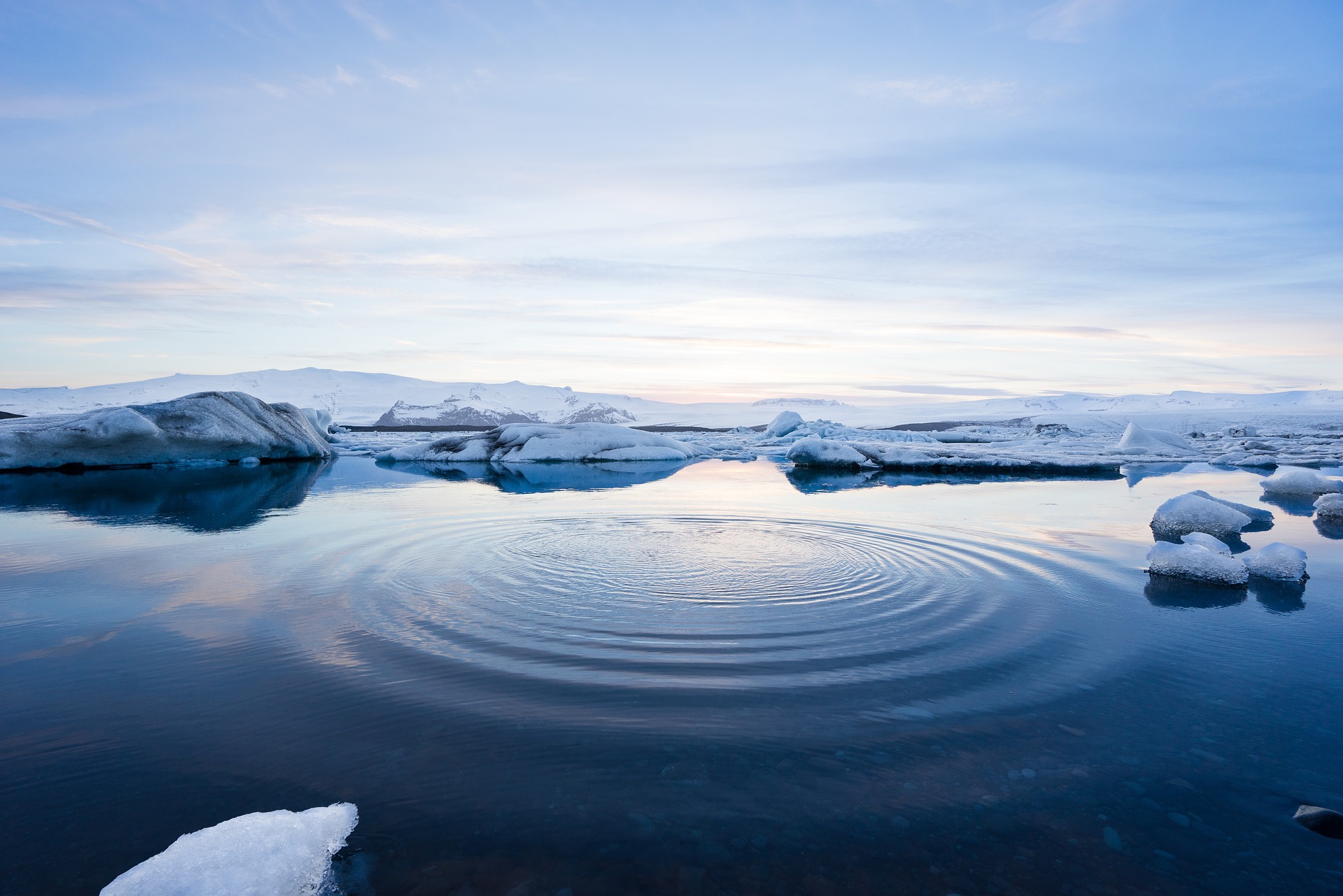 Earth & Space
Earth & Space
Will we soon witness the first summer without Arctic sea ice in 130,000 years?
A new study explains how Arctic sea ice might have melted completely during the Last Interglacial (warm period) around 130,000 years ago and supports predictions that the region will be sea ice-free by 2030-2060.

The Polar Regions represent our early warning system for climate change and are thus closely watched by scientists around the world. On the scientists watchlist, Arctic sea ice is kept under careful observation. In fact, Arctic sea ice decline is one of the most glaring examples of the effects of climate change. Since the beginning of the satellite era in 1979, sea ice cover in the Arctic has decreased steadily. The Arctic sea ice extent for July 2020 was 7.28 million square kilometres, the lowest extent ever recorded in July since 1979.
Our Planet has already faced periods of intense warming. In fact, about 130,000 years ago the Earth's climate was warmer than today. This period is known as the Last Interglacial. During this time, surface temperatures in the Arctic were 4-5 C higher than today. An Arctic warming of the same magnitude is predicted to occur by the end of the century, according to the latest climate projections. For this reason, the Last Interglacial represents an excellent framework to study the sensitivity of the Polar Regions, and sea ice, to a warmer world.
What drove summer Arctic temperature so high during the Last Interglacial has been long debated by the scientific community. One possible explanation is that Arctic temperatures soared because sea ice disappeared in the Central Arctic. Whether or not summer Arctic sea ice melted completely during the Last Interglacial is an outstanding research question in the paleo-climate community. However, this question cannot easily be answered because observations of sea ice from that period are scarce and their interpretation is difficult. Furthermore, when climate models have been used to simulate the Last Interglacial climate, they have failed to reproduce the observed high temperatures in the Arctic, and no model has ever simulated a complete loss of summer sea ice during the Last Interglacial ... until now.
We used the latest UK Earth System Model, developed by the UK Met Office for the forthcoming Intergovernmental Panel for Climate Change (IPCC) report, to simulate the Last Interglacial climate. This is an advanced climate model representing atmospheric, land, oceanic and ice processes. Unlike previously used models, our model simulated high Artic temperatures, very close to the observed ones, and predicted that, during The Last Interglacial, Arctic sea ice melted completely.
We tested the model's accuracy using summer air temperature observations for the Last Interglacial and found that 95% of the model-predicted temperatures were in agreement with observational data. It is known that surface temperature and sea ice are intrinsically related. Our model predicted the complete loss of summer sea ice during The Last Interglacial, and by doing so it reconciled the simulated temperatures with observations providing a 95% agreement.
Compared to its predecessors, the latest UK climate model has an improved representation of nearly all aspects of the climate system. In particular, the model has a representation of melt ponds, shallow pools of water that form on top of sea ice in spring and early summer. We concluded that, during the Last Interglacial, the intense springtime sunshine created many melt ponds, which absorbed more adiation and led to the melting of the sea ice.
But why is studying the past Earth climate important? And what does the future hold for Arctic sea ice?
When the UK Earth System Model has been used to simulate the climate of the future, it predicted an Arctic region free of summer sea ice by 2035. Moreover, the UK climate model is not the only one to make a similar prediction. New generation climate models, developed independently by research centres around the world, predict that Arctic sea ice will disappear in summer somewhere between 2030 – 2060, with the majority of them predicting summer sea ice disappearance before 2050.
The fact that the UK Earth System Model can realistically simulate the past warm Last Interglacial climate increases the confidence we have in our climate projections. Indeed, the fact that the model can be trusted with the past provides additional evidence in support of the validity of current climate projections, according to which the Arctic Ocean will be free of summer sea ice by 2030-2060.
Original Article:
1. Guarino, M. V. et al. Sea-ice-free Arctic during the Last Interglacial supports fast future loss. Nat. Clim. Chang. 10, 928-932 (2020).
Edited by:
Dr. Ayala Sela , Associate Editor
We thought you might like
For polar bears the cost of living is rising
Mar 13, 2018 in Earth & Space | 4 min read by George DurnerWarm waters hide in the unlikeliest of places – under the Arctic sea ice
Jul 31, 2019 in Earth & Space | 3.5 min read by Mary-Louise TimmermansMore from Earth & Space
Likely increase in coral thermal tolerance at a Pacific archipelago
Dec 29, 2023 in Earth & Space | 3 min read by Liam LachsEarth’s large lakes are shrinking
Dec 27, 2023 in Earth & Space | 3 min read by Fangfang Yao , Ben Livneh , Balaji RajagopalanGas in distant galaxies: mixed or matched?
Nov 22, 2023 in Earth & Space | 3 min read by Tanita Ramburuth-HurtThe astonishing jet of an extreme gamma-ray burst
Nov 20, 2023 in Earth & Space | 4 min read by Brendan O'ConnorOn how to use earthquakes to study a volcano
Oct 16, 2023 in Earth & Space | 4 min read by Carmen del Fresno , Simone CescaEditor's picks
Trending now
Popular topics


